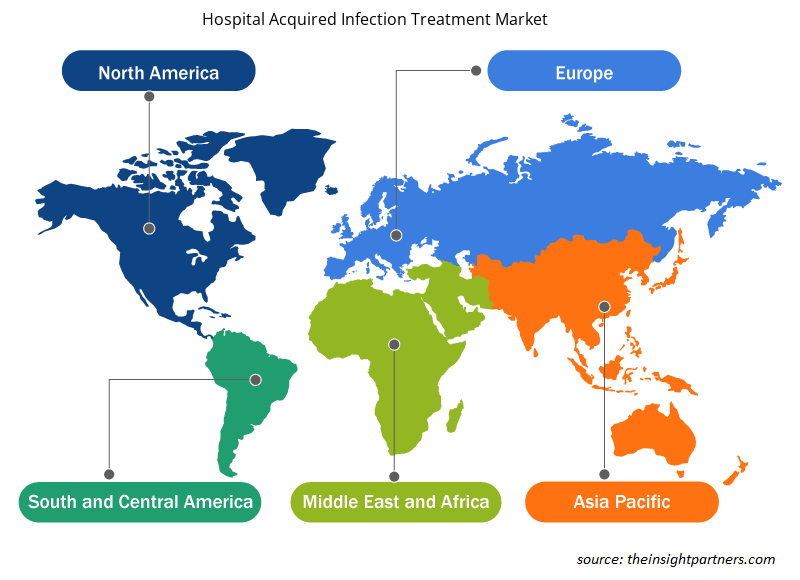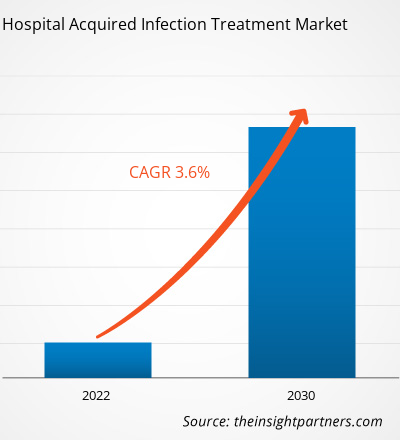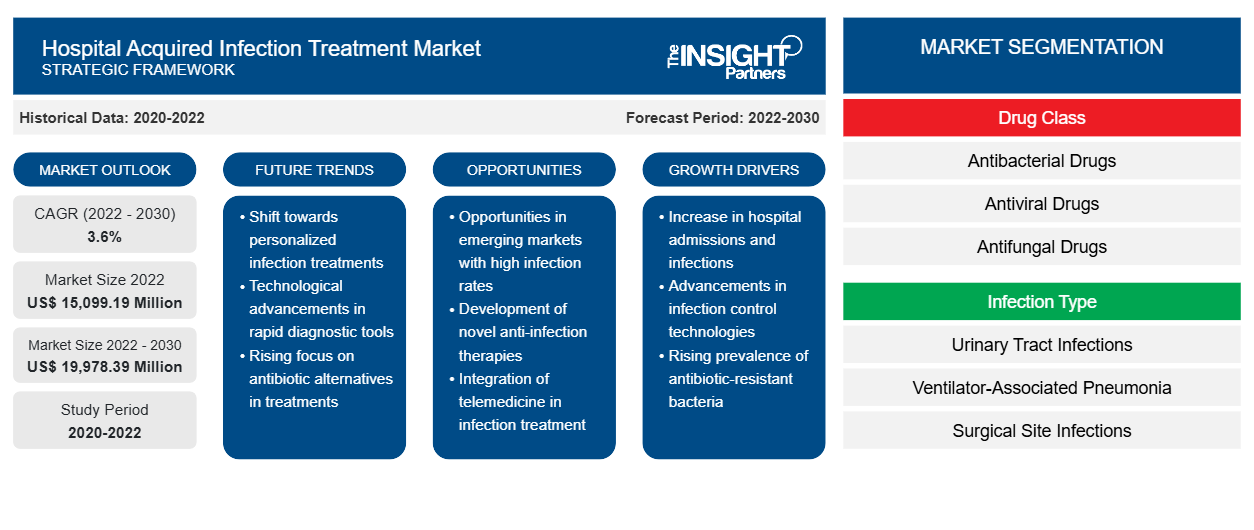[研究报告] 医院获得性感染治疗市场预计将从 2022 年的 150.9919 亿美元增长到 2030 年的 199.7839 亿美元;预计 2022 年至 2030 年的复合年增长率为 3.6%。
市场洞察和分析师观点:
医院获得性感染 (HAI),也称为院内感染,可能在各种环境中发生,包括医院、长期护理机构和门诊环境,也可能在出院后出现。HAI 还可能涉及影响医护人员的职业感染。推动医院获得性感染治疗市场增长的关键因素是 HAI 的高患病率以及对患者安全和优质护理的日益关注。然而,抗菌素耐药性的威胁阻碍了医院获得性感染治疗市场的增长。
增长动力和限制因素:
中心静脉导管相关血流感染、导管相关尿路感染和呼吸机相关肺炎是医源性感染 (HAI) 的几个例子。这些感染被称为手术部位感染,也可能发生在手术部位。根据美国疾病控制与预防中心 (CDC) 于 2021 年发布的《2020 年全国和各州医源性感染进展报告》,2019 年至 2020 年间,美国中心静脉导管相关血流感染、耐甲氧西林金黄色葡萄球菌 (MRSA) 菌血症和呼吸机相关事件的病例分别增加了 24%、35% 和 15%。
此外,根据美国国家医疗保健安全网络 (NHSN) 2022 年 1 月的报告,尿路感染 (UTI) 是第五大最常见的医源性感染类型。UTI 占急性护理医院疾病的 9.5% 以上。导管相关尿路感染 (CAUTI) 是由用于从膀胱排出尿液的导尿管引起的。CAUTI 是住院 UTI 患者中最常见的感染之一。根据疾病控制和预防中心 (CDC) 的数据,近 75% 的感染与导尿管有关。在住院期间,15% 至 25% 的住院患者需要使用导尿管。长时间使用导尿管是感染 CAUTI 的最主要风险因素。CAUTI 并发症会导致患者痛苦、住院时间延长、治疗费用增加甚至死亡。
此外,根据美国疾病控制与预防中心的数据,每年有超过 13,000 人死于尿路感染。急性无并发症膀胱炎会导致大约六天的不适,每年约有 700 万人次就诊,花费 16 亿美元。因此,不断增加的 HAI 病例给医疗保健系统带来了巨大的经济负担。CAUTI 患病率的不断上升,加上对治疗药物的需求不断增加,正在推动市场的发展。
然而,抗菌素耐药性对医院感染治疗构成了重大挑战,限制了现有抗菌剂的功效,并且需要开发新的治疗策略和抗菌替代品来有效对抗耐药病原体。
定制此报告以满足您的需求
您可以免费定制任何报告,包括本报告的部分内容、国家级分析、Excel 数据包,以及为初创企业和大学提供优惠和折扣
-
获取此报告的关键市场趋势。这个免费样品将包括数据分析,从市场趋势到估计和预测。
报告细分和范围:
全球医院内感染治疗市场根据药物类别、感染类型和分销渠道进行细分。根据药物类别,医院内感染治疗市场细分为抗菌药物、 抗病毒药物、抗真菌药物和其他药物。根据感染类型,医院内感染治疗分为尿路感染、呼吸机相关性肺炎、手术部位感染、血流感染和其他医院感染。根据分销渠道,市场细分为医院药房、零售药房、电子商务和其他。根据地域划分,医院感染治疗市场分为北美(美国、加拿大和墨西哥)、欧洲(德国、法国、意大利、英国、俄罗斯和欧洲其他地区)、亚太地区(澳大利亚、中国、日本、印度、韩国和亚太其他地区)、中东和非洲(南非、沙特阿拉伯、阿联酋和中东和非洲其他地区)以及南美洲和中美洲(巴西、阿根廷和南美洲和中美洲其他地区)。
节段分析:
医院感染治疗市场按药物类别分为抗菌药物、抗病毒药物、抗真菌药物和其他药物。抗菌药物在 2022 年占据最大市场份额,预计在 2022-2030 年期间的复合年增长率最高。
根据感染类型,医院获得性感染治疗市场分为泌尿道感染、呼吸机相关性肺炎、手术部位感染、血流感染和其他医院感染。泌尿道感染部分在 2022 年占据了最大的市场份额。然而,呼吸机相关性肺炎部分预计将在 2022 年至 2030 年期间实现最高的复合年增长率。
按分销渠道划分,医院获得性感染治疗市场分为医院药房、零售药房、电子商务和其他。2022 年,医院药房市场占有最大市场份额,预计该市场在 2022-2030 年期间的复合年增长率最高。
区域分析:
根据地理位置,全球医院内感染治疗市场分为五个主要区域——北美、欧洲、亚太地区、南美和中美、中东和非洲。
2022 年,北美占据了全球医院内感染治疗市场规模的最大份额。美国的医院内感染患病率很高,这推动了医院内感染治疗市场的增长。根据疾病预防控制中心的数据,在任何一天,大约每 31 名住院患者中就有 1 名患有至少一次医院内感染。同样,根据疾病预防和健康促进办公室的数据,医院内感染和其他感染可导致败血症,在美国每年导致约 170 万例患病病例和 27 万人死亡。因此,美国人民中医院内感染的高患病率推动了医院内感染治疗市场的增长。
行业发展和未来机遇:
以下列出了全球医院内感染治疗市场的主要参与者采取的各种举措:
- 2023年5月,Innoviva Specialty Therapeutics宣布,美国食品药品监督管理局(FDA)批准XACDURO(注射用舒巴坦;注射用度洛巴坦),联合包装供18岁及以上患者静脉使用,用于治疗由鲍曼不动杆菌-醋酸钙复合体(不动杆菌)敏感分离株引起的医院获得性细菌性肺炎和呼吸机相关性细菌性肺炎(HABP/VABP)。Innoviva Specialty Therapeutics表示,其专注于在重症监护和传染病领域提供创新疗法。
- 2023 年 5 月,印度科学教育与研究学院 (IISER)、浦那和中央药物研究所 (CSIR-CDRI)、勒克瑙的研究人员宣布,他们发现了一种针对经常引起医院内感染的鲍曼不动杆菌的潜在新抗生素。
- 2020年9月,盐野义制药株式会社宣布,FDA 批准了 FETROJA(头孢地洛)的补充新药申请(sNDA),用于治疗由易感革兰氏阴性微生物(例如阴沟肠杆菌复合体、肺炎克雷伯菌、鲍曼不动杆菌复合体、大肠杆菌、铜绿假单胞菌和粘质沙雷氏菌)引起的18岁及以上医院获得性细菌性肺炎和呼吸机相关性细菌性肺炎(HABP/VABP)患者。
- 2020年6月,默沙东宣布,美国食品药品监督管理局(FDA)批准了RECARBRIO(亚胺培南、西司他丁和瑞来巴坦)的补充新药申请(sNDA),用于治疗由敏感革兰氏阴性微生物引起的医院获得性细菌性肺炎和呼吸机相关性细菌性肺炎(HABP/VABP)的18岁及以上患者,这些微生物包括醋酸钙不动杆菌-鲍曼不动杆菌复合体、产酸克雷伯菌、肺炎克雷伯菌、阴沟肠杆菌、大肠杆菌、流感嗜血杆菌、产气克雷伯菌、铜绿假单胞菌和粘质沙雷氏菌。
医院获得性感染治疗市场区域洞察
Insight Partners 的分析师已详尽解释了预测期内影响医院获得性感染治疗市场的区域趋势和因素。本节还讨论了北美洲、欧洲、亚太地区、中东和非洲以及南美洲和中美洲的医院获得性感染治疗市场细分和地理位置。

- 获取医院获得性感染治疗市场的区域特定数据
医院获得性感染治疗市场报告范围
| 报告属性 | 细节 |
|---|---|
| 2022 年市场规模 | 150.9919亿美元 |
| 2030 年市场规模 | 199.7839亿美元 |
| 全球复合年增长率(2022 - 2030 年) | 3.6% |
| 史料 | 2020-2022 |
| 预测期 | 2022-2030 |
| 涵盖的领域 |
按药物类别
|
| 覆盖地区和国家 |
北美
|
| 市场领导者和主要公司简介 |
|
医院获得性感染治疗市场参与者密度:了解其对业务动态的影响
医院获得性感染治疗市场正在快速增长,这得益于终端用户需求的不断增长,这些需求源于消费者偏好的不断变化、技术进步以及对产品优势的认识不断提高等因素。随着需求的增加,企业正在扩大其产品范围,进行创新以满足消费者的需求,并利用新兴趋势,从而进一步推动市场增长。
市场参与者密度是指在特定市场或行业内运营的企业或公司的分布情况。它表明在给定市场空间中,相对于其规模或总市场价值,有多少竞争对手(市场参与者)存在。
在医院内感染治疗市场运营的主要公司有:
- 默克公司
- 辉瑞公司
- 艾伯维公司
- Paratek制药公司
- Eugia 美国有限责任公司
免责声明:上面列出的公司没有按照任何特定顺序排列。

- 了解医院获得性感染治疗市场顶级关键参与者概况
竞争格局和重点公司:
默克公司、辉瑞公司、艾伯维公司、Paratek Pharmaceuticals Inc、Eugia US LLC、雅培实验室、Cumberland Pharmaceuticals Inc、Innoviva Specialty Therapeutics Inc、西普拉有限公司和礼来公司是医院内感染治疗市场的主要参与者。这些公司专注于新技术、现有产品的改进和地域扩张,以满足全球日益增长的消费者需求,并增加其专业产品组合的产品范围。
- 历史分析(2 年)、基准年、预测(7 年)及复合年增长率
- PEST和SWOT分析
- 市场规模、价值/数量 - 全球、区域、国家
- 行业和竞争格局
- Excel 数据集
近期报告
相关报告
客户评价
购买理由
- 明智的决策
- 了解市场动态
- 竞争分析
- 客户洞察
- 市场预测
- 风险规避
- 战略规划
- 投资论证
- 识别新兴市场
- 优化营销策略
- 提升运营效率
- 顺应监管趋势























 获取免费样品 - 医院获得性感染治疗市场
获取免费样品 - 医院获得性感染治疗市场